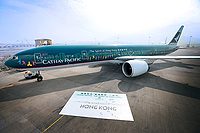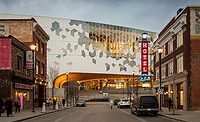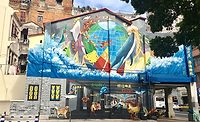The HMS Queen Elizabeth aircraft carrier, the pride of the Royal Navy, received its finishing touches of coating on many of the internal areas from coatings manufacturer Sherwin-Williams.
The Queen officially named the 920-foot-long HMS Queen Elizabeth - the largest warship ever built for the Royal Navy - by breaking a bottle of whisky on her bow at Rosyth Dockyard in Scotland.
As part of the final stages of the development of the carrier, Sherwin-Williams Protective & Marine Coatings Europe, Middle East and Africa (EMEA) provided the protection for a range of areas including the machinery spaces and internal wet spaces.
The coating supplied was a two-coat system using a primer of Metagard L674 epoxy glass flake or Epigrip C425V2 epoxy zinc phosphate.
For wet areas, a water-based epoxy Biogard M630V2 finish coat was used, and for internal dry compartments, a finish coat of water-based Envirogard M770 was applied. For machinery spaces, the finish coat used was Epigrip M922 epoxy glass flake.
When HMS Queen Elizabeth is finished, the aircraft carrier will hold a crew of 680 and be able to house a fleet of up to 40 jets and helicopters, creating what admirals say is a piece of British technology that can be deployed around the globe.
Aircraft Carrier Alliance Managing Director Ian Booth, the man overseeing the construction of the ship, said, "This is a historic occasion for our country and a proud moment for more than 10,000 people across the UK who have worked together to deliver HMS Queen Elizabeth.
“This is an engineering challenge of unprecedented scale and complexity for UK shipbuilding, and I want to congratulate everyone involved in making today possible.”
It was the first time in more than 15 years that the Queen had christened a Royal Navy warship and comes five years after the first metal was cut.





Report Abusive Comment